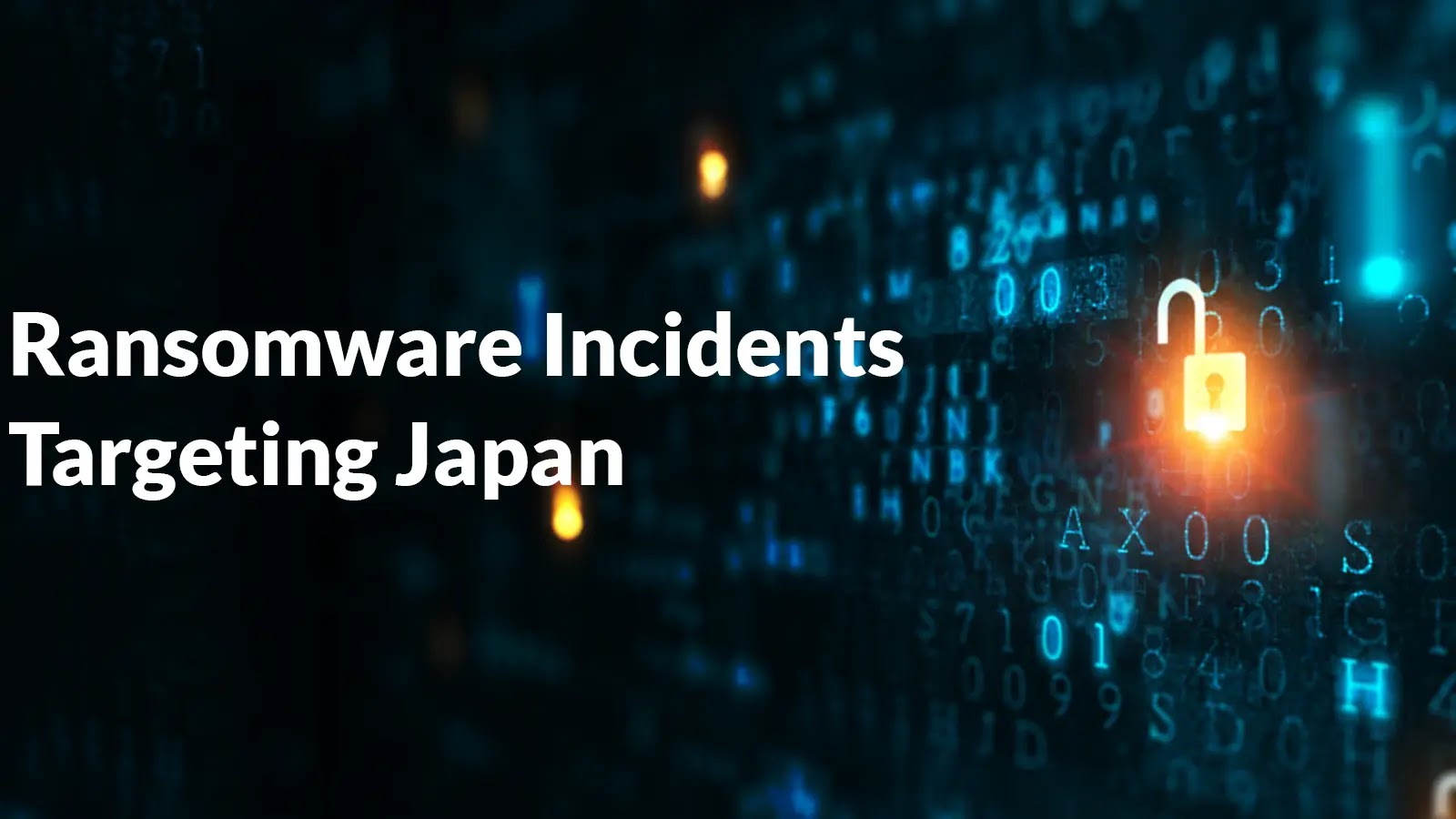
Ransomware Incidents Targeting Japan Increased by Approximately 1.4 Times
Japan, a nation often lauded for its technological prowess and commitment to innovation, is currently grappling with a stark and unsettling reality: a significant escalation in ransomware attacks. Recent data reveals a disturbing trend, highlighting the growing sophistication and persistence of cyber adversaries. The implications of this surge extend far beyond immediate financial losses, impacting critical infrastructure, business continuity, and national security.
The Alarming Rise of Ransomware in Japan
Comprehensive research points to a disconcerting surge in ransomware incidents targeting Japanese organizations during the first half of 2025. Compared to the same period in 2024, these attacks have increased by approximately 1.4 times, signaling a substantial escalation in cyber threats. Specifically, the period between January and June 2025 saw 68 documented ransomware cases affecting Japanese entities, a notable jump from the 48 cases reported in the preceding year. This upward trajectory underscores an urgent need for enhanced defensive strategies and a deeper understanding of the evolving threat landscape.
Understanding the Impact of Ransomware
Ransomware, a particularly insidious form of malware, encrypts a victim’s files, rendering them inaccessible until a ransom, typically demanded in cryptocurrency, is paid. The consequences of such attacks are multifaceted and severe:
- Operational Disruption: Businesses and organizations experience significant downtime, halting critical operations and hindering productivity.
- Financial Losses: Beyond the initial ransom payment (which is not guaranteed to restore data), organizations incur substantial costs related to incident response, recovery efforts, reputation damage, and potential legal fees.
- Data Breach Risks: Many modern ransomware variants combine encryption with data exfiltration, threatening to publish sensitive information if the ransom is not paid (double extortion).
- Reputational Damage: A successful ransomware attack can severely erode customer trust and damage an organization’s public image, leading to long-term consequences.
Common Attack Vectors and Tactics
While the specific tactics employed by ransomware gangs evolve, several common attack vectors persist:
- Phishing and Spear-Phishing: Deceptive emails or messages designed to trick recipients into revealing credentials or clicking malicious links remain a primary entry point.
- Exploiting Vulnerabilities: Attackers frequently leverage unpatched software vulnerabilities in operating systems, applications, or network devices to gain unauthorized access. Examples include weaknesses like those found in CVE-2021-34473 (ProxyShell) or CVE-2021-44228 (Log4Shell), which, while not direct ransomware, provide critical initial access.
- Remote Desktop Protocol (RDP) Exploits: Poorly secured RDP configurations continue to be a significant vulnerability.
- Supply Chain Attacks: Compromising a trusted supplier or software vendor can provide a gateway into numerous downstream organizations.
- Brute-Force Attacks: Attempting to guess weak passwords for network services or accounts.
Remediation Actions and Proactive Defense Strategies
Addressing the escalating ransomware threat requires a multi-layered and proactive defense strategy. Organizations in Japan and globally must prioritize robust cybersecurity measures:
- Regular Backups: Implement and meticulously test a comprehensive backup and recovery plan. Ensure backups are isolated from the main network (air-gapped) and immutable.
- Patch Management: Maintain a rigorous patch management program, regularly updating all operating systems, software, and firmware to mitigate known vulnerabilities. Pay particular attention to critical patches for common enterprise applications and network infrastructure.
- Multi-Factor Authentication (MFA): Mandate MFA for all user accounts, especially for remote access, privileged accounts, and cloud services.
- Network Segmentation: Implement network segmentation to isolate critical systems and data, limiting an attacker’s lateral movement within the network if a breach occurs.
- Endpoint Detection and Response (EDR): Deploy EDR solutions to monitor endpoints for suspicious activity, detect threats in real-time, and enable rapid response.
- Security Awareness Training: Regularly train employees on cybersecurity best practices, including identifying phishing attempts, safe browsing habits, and reporting suspicious activities.
- Incident Response Plan: Develop, practice, and refine a detailed incident response plan to ensure a swift and effective reaction to a ransomware attack.
- Vulnerability Management: Conduct regular vulnerability assessments and penetration tests to identify and remediate weaknesses before attackers can exploit them.
Essential Tools for Ransomware Defense
Implementing effective ransomware defense relies heavily on leveraging the right tools. Here is a selection of essential tools that can bolster an organization’s security posture:
| Tool Name | Purpose | Link |
|---|---|---|
| Veeam Backup & Replication | Comprehensive data backup and recovery solution, crucial for ransomware recovery. | https://www.veeam.com/ |
| CrowdStrike Falcon Insight EDR | Advanced endpoint detection and response, threat hunting, and incident response. | https://www.crowdstrike.com/ |
| Nessus (Tenable) | Vulnerability scanning and management to identify exploitable weaknesses in systems. | https://www.tenable.com/products/nessus |
| Microsoft Defender for Endpoint | Integrated endpoint security platform including EDR, antivirus, and threat intelligence. | https://www.microsoft.com/en-us/security/business/threat-protection/microsoft-defender-for-endpoint |
| KnowBe4 Security Awareness Training | Platform for security awareness training and simulated phishing attacks. | https://www.knowbe4.com/ |
Looking Ahead: The Ongoing Challenge
The significant increase in ransomware attacks targeting Japan serves as a stern reminder: cyber threats are persistent, continually adapting, and globally interconnected. Proactive investment in cybersecurity infrastructure, ongoing employee education, and a commitment to continuous improvement are no longer optional. For organizations in Japan and beyond, strategic defense and resilience are paramount in an increasingly hostile cyber landscape.





